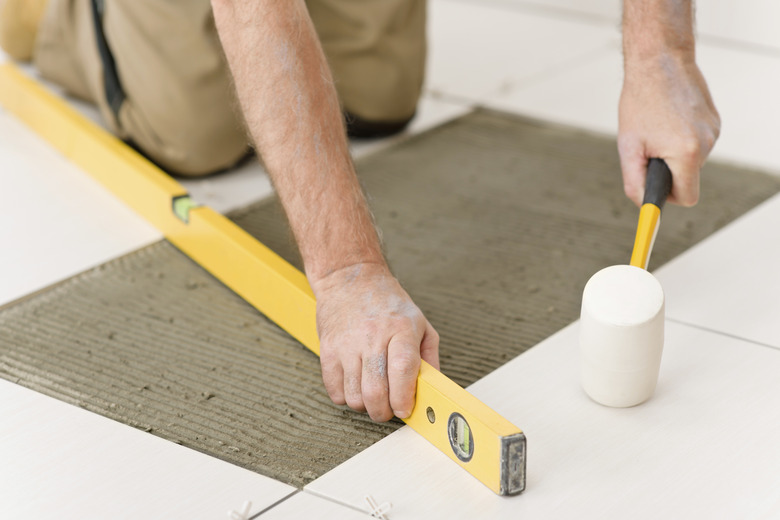Can You Tile Over Particle Board?
Newer bonding formulas have made it possible to create solid adhesion between tiles and particleboard, but according to the Ceramic Tile Institute of America, particleboard and plywood are problematic when used under ceramic tile. This is due to their shrinkage and swelling as seasons change.
Particleboard and Tile
Particleboard and tile don't mix well on surfaces subject to stress because ceramic tile exhibits none of the movement inherent to wood-based material such as particleboard. Tile is extremely stable and not liable to shrink or warp and will not flex with such changes in wood products. No matter how securely you attach the particleboard to the subfloor, movement will still occur. In particleboard, this movement can be more than eight times that of concrete. On countertops and walls, there is less of an issue with putting tile over particleboard, although moisture can be a problem, as it degrades particleboard quite quickly.
Flooring Concerns
The Ceramic Tile Institute of America recommends against using particleboard as a foundation for ceramic tile in flooring. Over time, the likelihood of problems arising from such installation are far higher than if you use a substrate such as concrete, which is recommended. If you do not have the capacity to use concrete as a base, and if your floor will be in a light traffic areas (such as a residential kitchen, as opposed to a commercial interior), plywood is recommended rather than particleboard. A double layer of the plywood is best.
Vinyl tiles over particleboard are not recommended for flooring either, as the seams can spread, and when moisture gets through the particleboard beneath it, warping will occur. Vinyl sheeting is recommended instead for installation over particleboard.
Walls and Countertops
With walls, countertops and bathrooms, particleboard has the same liability as it does with floors. While those surfaces may be less prone to the physical stresses on a floor, they are equally if not more vulnerable to moisture. Once the moisture gets in, the particleboard swells and can dislodge the tiles.
